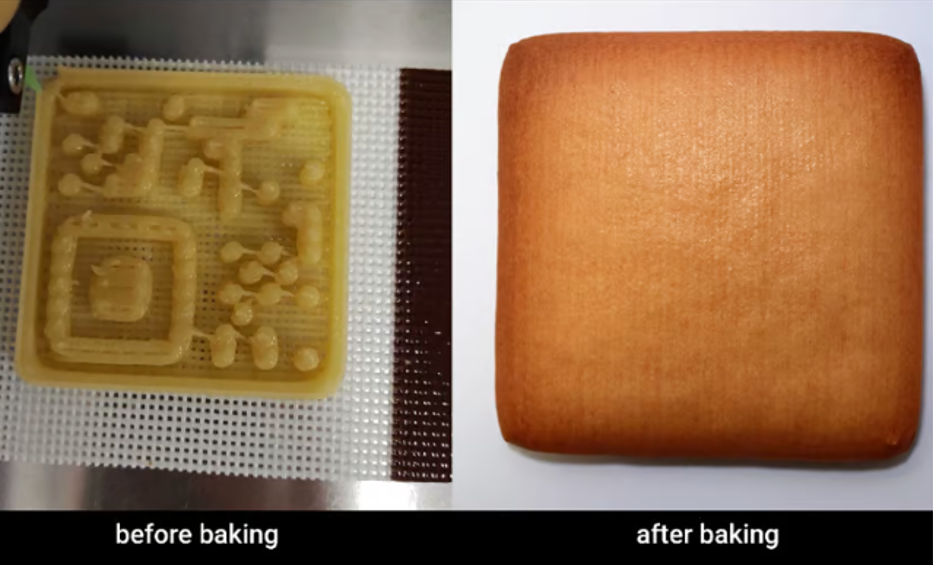By Ben
Coxworth
October 17, 2022
Facebook
Twitter
Flipboard
LinkedIn

A 3D-printed edible QR code (left), and the finished cookie
that contains it CC BY-ND, 2022 Miyatake et al., ACM UIST 2022
VIEW 2 IMAGES
The technology is known as "interiqr" (as in
"interior QR") and is being developed by a team at Japan's Osaka
University. As a proof-of-concept exercise, the researchers recently 3D-printed
cookies which were smooth and normal-looking on the outside, but that contained
a pattern of air voids on the inside.
Although those patterns can't be seen under normal
lighting, they show up as silhouetted windows when the cookies are viewed from
the front while lit from behind. An ordinary smartphone is then able to read
the codes, revealing the data stored within.
Needless to say, in its present form, the technology would
be limited to use in relatively thin, somewhat translucent 3D-printed foods.
Nonetheless, the scientists are hoping that it could ultimately provide
manufacturers, retailers and consumers with an alternative to more wasteful,
costly approaches such as the paper labels that are routinely applied to fruit,
or RFID tags that are applied to packaging.
Additionally, if information such as ingredients and nutritional
content could be relayed by the food item itself, less packaging would be
needed to display that same data.
A diagram illustrating how the interiq technology could be
utilized CC BY-ND, 2022 Miyatake et al., ACM UIST 2022
"Our 3D printing method is a great example of the
digital transformation of foods, which we hope will improve food traceability
and safety," said the senior author of the study, Kosuke Sato. "This
technology can also be used to provide novel food experiences through augmented
reality, which is an exciting new field in the food industry."
The team will be presenting a paper on the research later
this month at The 35th Annual ACM Symposium on User Interface Software and
Technology. There's more information on how the interiq system works, in the
video below.
interiqr: Unobtrusive Edible Tags using Food 3D Printing
https://www.youtube.com/watch?v=vAMmxEroSzs
Source: Osaka University via AlphaGalileo